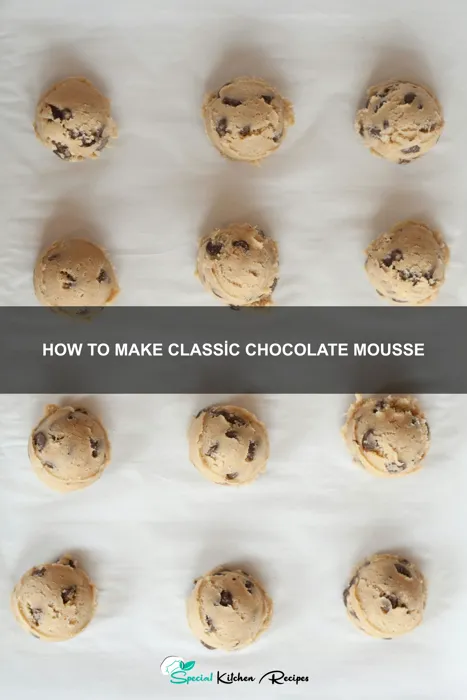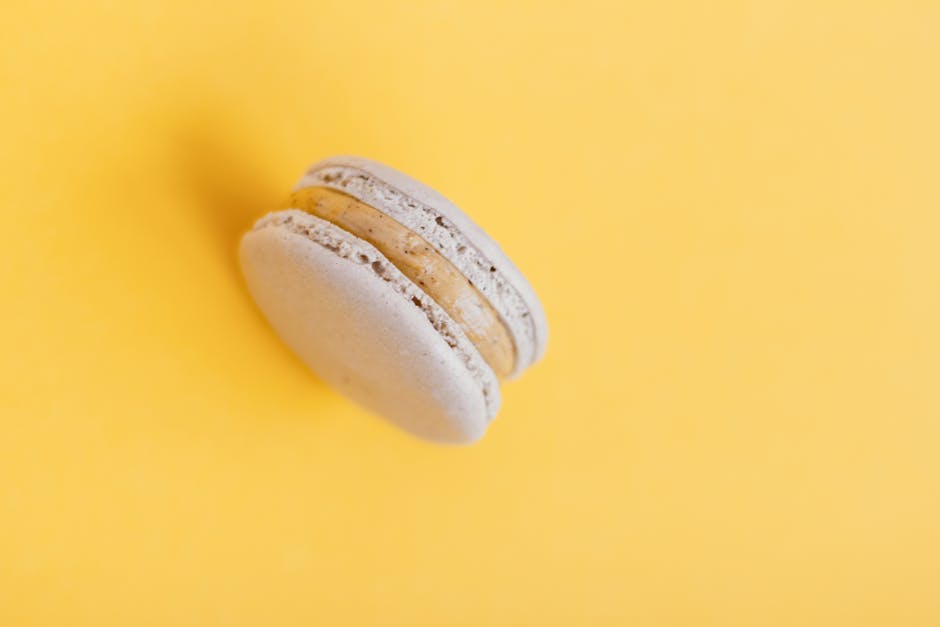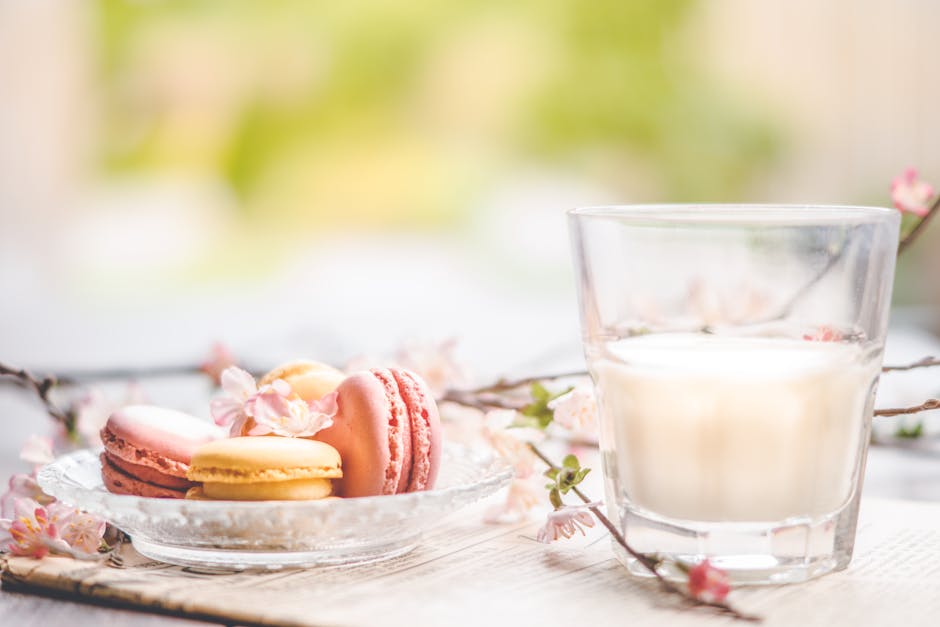Chocolate mousse, a culinary delight enjoyed globally, boasts a history as rich and decadent as its flavor. While pinpointing its exact origin is difficult, its development is intrinsically linked to the increasing availability and affordability of chocolate in Europe during the 19th century. Early versions likely involved whisking egg whites with melted chocolate, a technique that predates the widespread use of electric mixers. The airy, light texture we associate with mousse emerged gradually, refined through experimentation with different chocolate types, fat content, and whipping techniques. Its popularity soared alongside the rise of French cuisine, solidifying its status as a classic dessert.
The cultural significance of chocolate mousse is undeniable. It transcends geographical boundaries, appearing on menus from Parisian bistros to American diners, a testament to its universal appeal. It’s often associated with romance and luxury, frequently featured in special occasions and celebrations. Its versatility allows for countless variations, from the simplest dark chocolate mousse to those incorporating liqueurs, fruits, or spices, reflecting the diverse culinary traditions that have embraced it. Consider this: a recent survey indicated that chocolate mousse ranks among the top five most-ordered desserts in upscale restaurants worldwide, highlighting its enduring popularity and perceived value.
Interestingly, the mousse in chocolate mousse isn’t directly related to the English word mousse, meaning foam. The French word mousse encompasses a broader range of light and airy preparations, including those made with savory ingredients. However, the chocolate version has undeniably captured the global imagination. Its simple elegance belies a surprising level of delicacy in its preparation; achieving the perfect balance of airy texture and intense chocolate flavor requires precision and attention to detail. This recipe will guide you through the process, unlocking the secrets to crafting a classic chocolate mousse that will impress even the most discerning palates. Get ready to experience the magic of this timeless confection.
Ingredients and Measurements
Creating a truly decadent chocolate mousse hinges on the quality and precise measurement of your ingredients. Don’t skimp on the good stuff! Using high-quality bittersweet or dark chocolate will dramatically elevate the flavor profile. For this recipe, we’ll be using 6 ounces (170 grams) of bittersweet chocolate, at least 70% cacao. You can substitute with dark chocolate, but be mindful that the higher the percentage of cacao, the more intense and potentially bitter the final product will be. Adjust the sugar accordingly if using a very dark chocolate.
Next, we need eggs. Use very fresh, large eggs for the best results. The yolks contribute significantly to the mousse’s richness and creamy texture. We’ll be using 4 large egg yolks. Separate them carefully from the whites, ensuring absolutely no yolk contamination in the whites, as even a tiny speck will prevent them from whipping properly. This is crucial for achieving the light and airy texture of the mousse.
Sugar plays a dual role: balancing the bitterness of the chocolate and providing structure to the mousse. We’ll use 1/4 cup (50 grams) of granulated sugar, divided into two portions. One portion will be added to the egg yolks while the other portion will be added to the whipped egg whites. Using caster sugar or superfine sugar will yield a smoother final product. Avoid using coarse granulated sugar, as it might not dissolve completely.
For a touch of richness and texture, we’ll incorporate 1/4 cup (60ml) of heavy cream. Using heavy cream with a high fat content (at least 36%) is essential for achieving a luxuriously smooth and stable mousse. Lighter creams will result in a thinner, less stable mousse. Make sure your cream is well-chilled before whipping.
Finally, a pinch of salt enhances the chocolate flavor. Just a pinch (about 1/8 teaspoon) will suffice. Don’t overdo it, as it could overpower the delicate chocolate taste.
Ingredient Summary:
- 6 ounces (170 grams) bittersweet chocolate (70% cacao or higher)
- 4 large egg yolks
- 1/4 cup (50 grams) granulated sugar (divided)
- 1/4 cup (60ml) heavy cream (at least 36% fat)
- Pinch of salt (about 1/8 teaspoon)
Accurate measurements are key to successful mousse making. Using a kitchen scale for weighing ingredients, especially the chocolate and sugar, will ensure consistent results. For liquid measurements, use measuring cups and spoons, ensuring you measure at eye level for accuracy.
Equipment List
Creating a flawlessly smooth and decadent chocolate mousse requires the right tools. While you might be able to improvise with some items, having the correct equipment will significantly enhance your experience and the final product’s quality. This list details the essential tools, along with recommendations to ensure success.
Mixing Bowls: You’ll need at least two mixing bowls of different sizes. One, ideally a medium-sized (approximately 8-10 inch diameter) stainless steel bowl, is crucial for whipping the egg whites. Stainless steel is preferred as it provides excellent stability and prevents unwanted reactions. The second, a slightly larger bowl (approximately 10-12 inch diameter), is needed for combining the chocolate and cream mixture. Glass or stainless steel are both suitable options for this bowl. Avoid using plastic bowls, especially for whipping egg whites, as they may retain fats that hinder proper whipping.
Whisk: A sturdy whisk (preferably balloon whisk) is essential for both whipping the egg whites and incorporating the melted chocolate into the cream. A balloon whisk’s larger surface area incorporates air more effectively, resulting in a lighter and airier mousse. A hand whisk is perfectly adequate; however, a stand mixer with a whisk attachment can significantly reduce the effort required.
Rubber Spatula (or Silicone Spatula): A flexible rubber or silicone spatula is invaluable for gently folding the egg whites into the chocolate mixture. This delicate folding action prevents deflating the whipped egg whites, preserving the mousse’s light and airy texture. Choose a spatula that is sturdy enough to scrape down the sides of the bowl effectively.
Double Boiler (or Heat-safe Bowl and Saucepan): A double boiler is the ideal way to gently melt the chocolate without scorching it. Alternatively, you can improvise by placing a heat-safe bowl over a saucepan of simmering water (ensure the bowl’s bottom doesn’t touch the water). Monitor the heat carefully to prevent overheating and seizing the chocolate.
Measuring Cups and Spoons: Accurate measurements are key to achieving the perfect consistency. Invest in a set of reliable measuring cups and spoons to ensure consistent results. Use metric measurements for precise results, especially when dealing with eggs and liquid ingredients.
Fine-Mesh Sieve (Optional but Recommended): Sieving the melted chocolate before incorporating other ingredients ensures a completely smooth texture, free from any lumps. This is particularly beneficial if using a chocolate bar instead of chocolate chips.
Serving Dishes or Glasses: Finally, you’ll need individual serving dishes or glasses to present your exquisite chocolate mousse. Elegant ramekins or stemmed glasses are perfect for showcasing this decadent dessert.
Preparation of Ingredients
Before you begin assembling your classic chocolate mousse, meticulous preparation of your ingredients is key to achieving a luxuriously smooth and decadent texture. We’ll start with the chocolate, the star of the show.
For this recipe, we’ll use 6 ounces (170g) of high-quality bittersweet chocolate, at least 70% cacao. Choosing a good quality chocolate is paramount; it significantly impacts the final flavor and richness of your mousse. Chop the chocolate into small, roughly ½-inch pieces. This ensures even melting and prevents large chunks from remaining in the final product. Avoid using chocolate chips, as they often contain stabilizers that can affect the mousse’s texture.
Next, let’s prepare the whipping cream. We’ll need 1 cup (240ml) of heavy cream, which is essential for achieving the airy lightness of the mousse. Ensure your cream is very cold; this is crucial for proper whipping. Chill the bowl and whisk you’ll be using in the refrigerator for at least 30 minutes before you start. Cold cream and chilled equipment will help the cream whip to stiff peaks more easily and stably.
For a richer flavor profile, consider adding a touch of sweetness. We’ll use 2 tablespoons of granulated sugar. Avoid over-sweetening; the bittersweet chocolate should still be the dominant flavor. You can always adjust the sugar to your preference, but start with the recommended amount and taste as you go.
Finally, prepare a small bowl of very cold water. This is important for the chocolate melting process. Having cold water ready will help to quickly cool down the melted chocolate if it gets too hot, preventing seizing. Seized chocolate is a common problem when melting chocolate – it happens when water gets into the chocolate and it becomes grainy. A little prevention goes a long way.
With all your ingredients prepped and ready, you can now move on to the next step with confidence, ensuring a perfect chocolate mousse every time.
Mousse Assembly
With your luscious chocolate ganache prepared and your whipped cream perfectly aerated, it’s time to assemble the mousse. This stage requires gentle handling to maintain the airy texture of the finished product. The key is to fold the ingredients together, not stir them. Stirring will deflate the whipped cream and result in a dense, less appealing mousse.
Begin by gently pouring approximately 1/3 of the whipped cream into the chocolate ganache. This helps to lighten the ganache and make it easier to incorporate the remaining cream. Use a large spatula or a whisk and perform a gentle folding motion. Imagine you’re scooping the mixture from the bottom and gently turning it over onto itself. Avoid vigorous mixing.
Once the first portion of whipped cream is incorporated, add another 1/3 and continue folding gently. Be patient; it may seem like it’s taking a long time, but rushing will compromise the texture. The mixture should gradually become lighter and airier. The goal is to create a uniform consistency without any streaks of chocolate or pockets of whipped cream.
Finally, add the remaining whipped cream and continue folding until just combined. Do not overmix. A few streaks of chocolate are acceptable, as overmixing will result in a deflated, less airy mousse. The mixture should be light and fluffy, holding its shape slightly when you lift the spatula.
For optimal results, use a spatula with a flexible blade, allowing you to reach the bottom and sides of the bowl effectively without over-mixing. Proper folding technique is crucial for creating a light and airy mousse. If you’re unsure, a few practice folds with a small amount of mixture can help you perfect the technique before incorporating the entire batch.
Once the mousse is assembled, immediately transfer it to individual serving dishes or a larger bowl, depending on your preference. Avoid letting the mousse sit for too long before serving, as it will begin to settle and lose its airy texture. If you need to chill it before serving, do so for no more than 2-3 hours in the refrigerator.
And there you have it! Your perfectly assembled chocolate mousse is ready for its grand debut. Remember, practice makes perfect, so don’t be discouraged if your first attempt isn’t flawless. With a little patience and attention to detail, you’ll soon be mastering the art of creating a light and airy chocolate mousse that will impress everyone.
Chilling and Setting
Chilling is crucial for achieving the perfect, velvety texture of classic chocolate mousse. Improper chilling leads to a runny, unstable dessert, while over-chilling can result in a grainy or icy texture. Precise timing and technique are key.
Once you’ve gently folded the whipped cream into the chocolate mixture, immediately transfer the mousse into individual serving dishes or a larger bowl. This prevents the mousse from settling unevenly or deflating prematurely. We recommend using small, elegant glasses or ramekins for individual servings. If using a larger bowl, ensure it’s shallow to allow for even chilling.
Cover the mousse containers tightly with plastic wrap. Press the plastic wrap directly onto the surface of the mousse to prevent a skin from forming. This is especially important if you’re chilling for a longer period. Alternatively, you can use a lid, ensuring it’s airtight.
Chill the mousse in the refrigerator for at least 3-4 hours, or preferably overnight. This allows the mousse to fully set and develop its rich, creamy consistency. The longer it chills, the firmer it will become. However, chilling for more than 24 hours might result in a slightly drier texture.
Avoid placing the mousse in the freezer. Freezing will alter the texture irrevocably, causing ice crystals to form and ruining the delicate, airy structure of the mousse. The refrigerator provides the optimal, slow chilling process necessary for a perfect result.
Before serving, gently remove the mousse from the refrigerator. Allow it to sit at room temperature for about 10-15 minutes. This will slightly soften the mousse, making it easier to serve and enhancing its velvety texture. The mousse should still hold its shape beautifully, but will be less firm and more enjoyable to eat.
Garnish the mousse just before serving with fresh berries, chocolate shavings, or a dusting of cocoa powder. This adds a final touch of elegance and complements the rich chocolate flavor. Remember to handle the chilled mousse gently to avoid disturbing its delicate texture.
Serving Suggestions (including garnishes)
Your luscious chocolate mousse is ready! Now, let’s focus on presenting it in a way that’s as delightful as the taste. Presentation is key to elevating this classic dessert from good to unforgettable.
Classic Elegance: For a timeless presentation, serve your mousse in individual stemmed glasses or dessert dishes. Fill each glass about ¾ full, leaving a little space at the top. This prevents spills and allows for a visually appealing garnish.
Garnish Ideas: A simple garnish can dramatically enhance the mousse’s appeal. Consider these options:
Chocolate Shavings: Using a vegetable peeler or a sharp knife, create delicate chocolate shavings from high-quality dark chocolate. Gently sprinkle approximately 1 tablespoon of shavings over each serving. Avoid using too much, as it can overwhelm the mousse’s delicate texture.
Fresh Berries: A handful of fresh raspberries, strawberries, or blueberries adds a vibrant color contrast and a burst of fruity acidity that complements the richness of the chocolate. Arrange 3-4 berries artfully on top of each mousse. Choose berries that are ripe but firm to avoid them sinking into the mousse.
Whipped Cream: A dollop of lightly sweetened whipped cream adds a touch of lightness and sweetness. Use about 1-2 tablespoons of whipped cream per serving. Ensure your whipped cream is very cold for optimal texture and stability.
Meringue Kisses: For a sophisticated touch, top each mousse with a small, delicate meringue kiss. These can be store-bought or homemade. One miniature meringue per serving is sufficient.
Chocolate Sauce: A drizzle of warm chocolate sauce adds a luxurious touch. Use a thin, even stream from a small squeeze bottle or a spoon to create a visually appealing design. Aim for about 1 teaspoon per serving.
Mint Sprig: A small, fresh mint sprig provides a refreshing counterpoint to the rich chocolate. Use only a single small sprig per serving; any more might be overpowering.
Temperature is Crucial: Serve your mousse chilled, but not frozen. A slightly cool temperature allows the mousse to retain its delicate texture and enhances its flavor. Allow the mousse to sit at room temperature for about 10-15 minutes before serving to soften slightly if it’s too firm.
Presentation Matters: Consider the overall aesthetic. Use elegant dessert plates, and perhaps a small dusting of cocoa powder on the plate around the mousse for a finished look. Remember, the goal is to create a visually stunning and delicious dessert that impresses your guests.
Recommendations
For the richest and most decadent chocolate mousse, use high-quality dark chocolate with a high percentage of cacao (70% or higher). The higher the percentage, the more intense the chocolate flavor will be. Allow the chocolate to melt slowly and completely to ensure a smooth, lump-free mousse. Don’t overwhip the cream; slightly soft peaks are ideal for a light and airy texture. Gently fold the whipped cream into the chocolate mixture to avoid deflating the air bubbles.
Serve your chocolate mousse immediately for the best texture and flavor. While it will still be enjoyable later, the mousse will begin to slightly deflate over time. For a truly elegant presentation, pipe the mousse into individual serving glasses or ramekins. Garnish with a dusting of cocoa powder, chocolate shavings, fresh berries (such as raspberries or strawberries), or a sprig of mint. A single whipped cream dollop adds a touch of extra richness.
If you have leftovers, store the mousse in an airtight container in the refrigerator for up to 2 days. However, keep in mind that the texture may change slightly. Avoid freezing the mousse, as this can significantly alter its consistency. It’s best enjoyed fresh.
Chocolate mousse pairs beautifully with a variety of complementary dishes. It makes a wonderful ending to a romantic dinner, but also complements lighter fare. Consider serving it alongside fresh fruit tarts, a light sponge cake, or even a simple biscotti for dipping. For a more decadent experience, pair it with a dessert wine, such as a tawny port or a late-harvest riesling.
Approximate Nutritional Information (per serving, based on a recipe yielding 4 servings): Calories: 300-350 (depending on chocolate and cream used), Fat: 20-25g, Saturated Fat: 15-20g, Cholesterol: 50-70mg, Carbohydrates: 20-25g, Sugar: 15-20g, Protein: 5-7g. Note: This is an estimate and may vary depending on the specific ingredients and quantities used. For accurate nutritional information, use a nutrition calculator with your exact recipe details.





